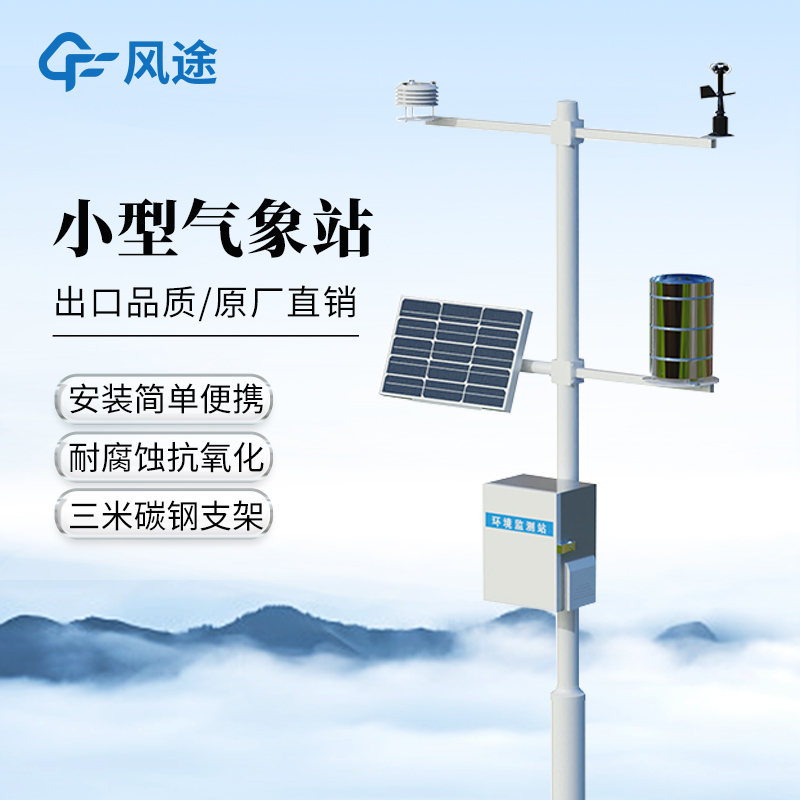Tianyi Sensor IOT Technology Co., Ltd
Sales Manager:Ms. Emily Wang
Cel,Whatsapp,Wechat:+86 15898932201
Email:info@fengtutec.com
Add:No. 155 Optoelectronic Industry Accelerator, Gaoxin District, Weifang, Shandong, China

Sales Manager:Ms. Emily Wang
Cel,Whatsapp,Wechat:+86 15898932201
Email:info@fengtutec.com
Add:No. 155 Optoelectronic Industry Accelerator, Gaoxin District, Weifang, Shandong, China
time:2025-06-06 08:52:01 source:Weather Station viewed:194 time
A meteorological observation station is a facility used to monitor and record meteorological information. It collects data on weather conditions through various instruments and equipment, providing important basis for weather forecasting, climate research and disaster warning.
As a professional facility for comprehensive observation of meteorological elements, its system architecture consists of two major components: hardware and software. At the hardware level, sensors are the basic equipment for acquiring meteorological data. For example, thermocouple temperature sensors can convert heat fluctuations into electrical signals to accurately measure air temperature; tipping bucket rain gauges can count the number of tip bucket tilts to realize the statistics of rainfall. The data collector plays a central role in the system, collecting, processing and storing the signals output by the sensors. The power supply mostly adopts the mode of solar panels with storage batteries to ensure stable power supply. Communication equipment can use wireless transmission methods such as GPRS and satellites, or wired transmission channels such as optical fibers to realize the real-time transmission of data to the meteorological center. Protective devices such as wind-proof and corrosion-resistant metal brackets and lightning protection systems ensure the normal operation of hardware equipment under complex meteorological conditions.
The acquisition software is responsible for real-time calibration and storage of sensor data. The business software collates the raw data into reports and charts for easy analysis, and supports remote equipment management. The data analysis and prediction software uses algorithm models to conduct in-depth analysis of historical meteorological data, and then predicts the trend of weather evolution, providing strong data support for meteorological forecasting, disaster prevention and other work.
The role of meteorological observation stations is mainly reflected in three aspects. First, it is the basic data source for weather forecasting. Based on the data of air temperature, humidity, air pressure, wind direction and wind speed collected by the meteorological station, meteorologists use meteorological principles and computer models to analyze the movement of the atmosphere and predict future weather conditions. For example, if a meteorological station records a continuous drop in air pressure, combined with changes in other meteorological elements, it may indicate the approach of a rainstorm or storm. Second, meteorological stations are key facilities for climate research. Long-term observation data from meteorological stations are irreplaceable for studying climate change. Through decades or even centuries of data accumulation from meteorological stations, scientists can analyze the changing trends of climate elements such as temperature and precipitation, and understand the evolution laws of the climate system. Finally, meteorological stations can monitor extreme weather events in real time and provide a strong support for disaster warning. When severe weather such as rainstorms, strong winds and typhoons occurs, the monitoring data of meteorological stations can be timely fed back to the meteorological department, which will issue disaster warning information accordingly to remind people to take preventive measures and reduce disaster losses.
Meteorological stations are generally established in open and representative locations to ensure that the collected data can truly reflect the local atmospheric conditions. Their layout will take into account avoiding the interference of surrounding tall buildings, trees and other factors on the observation data. According to different observation needs and geographical conditions, they are divided into many types, such as urban meteorological stations, mountain meteorological stations and marine meteorological stations.

The Eleven - element Photovoltaic weather station is a meteorological monitoring device used in the field of distributed photovoltaic power generation, capable of real - time monitoring of multiple meteorological elements:Scheme 1: Wind speed + Wind direction + Average wind speed + Temperature + Hum...
The FT-WQX8B Photovoltaic Weather Station is a professional environmental monitoring device developed and manufactured by Fengtu Technology, a company specializing in the R&D of micro weather stations and meteorological environment solutions. With a complete industrial chain and technical team,...
3D Ultrasonic Anemometer can measure the horizontal and vertical wind speed and direction values in three-dimensional space at high frequency, providing accurate and real-time data support for various industries.The working principle of this sensor is based on the propagation characteristics of ultr...
Dust Monitoring Equipment is a critical environmental monitoring device explicitly required by environmental protection authorities. Its core monitoring parameters include PM2.5 and PM10, while it also concurrently monitors meteorological factors such as wind speed, wind direction, temperature, and...